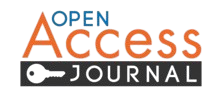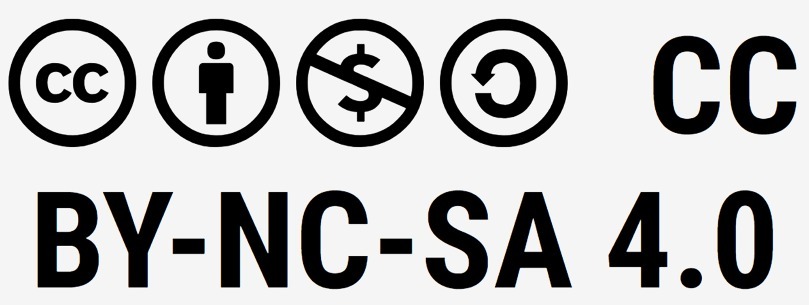Manuscript Sections
Consortium Publisher – ICDTD Inc., Canada
?? https://consortiumpublisher.com
To ensure consistency, clarity, and scientific integrity, all submitted manuscripts must be organized according to the following structured sections. These guidelines are aligned with international editorial standards, including those of the International Committee of Medical Journal Editors (ICMJE), COPE, CONSORT, PRISMA, and STROBE, depending on study type.
The following detailed instructions are necessary to allow direct reproduction of the manuscript for rapid publishing. If instructions are not followed, the manuscript will be returned for retyping. Manuscript Organization and Preparation Conventions names of genes, microorganisms, or botanical origins of plants must be italicized. Authors must use the original name published unless they have obtained permission to rename it from the authors of the original study or international body. American spelling should be used throughout the manuscript. The research or review manuscripts submitted should be divided into the following sections:
- Title
- Title page
- Structured Abstract
- Graphical Abstract
- Keywords
- Text Organization (for review article)
- Instruction
- Methodology/ Material and Method
- Result
- Discussion
- Conclusion
- List of Abbreviations (if any)
- Consent for Publication
- Conflict of Interest
- Acknowledgements
- References
- Figures/Illustrations (if any)
- Chemical Structures (if any)
- Tables (if any)
- Supportive/Supplementary Material (if any)
1. Title Page
- Manuscript Title: Clear, concise, and accurately reflects the core content.
- Author(s): Full names with academic qualifications and institutional affiliations.
- ORCID iDs: Authors are encouraged to register and include their ORCID.
- Corresponding Author: Include full name, postal address, institutional email, and phone number.
- Running Title: A short form of the main title (≤ 50 characters).
- Word Count: Include the total word count of the manuscript (excluding references).
2. Abstract
- Structured Abstract (for original research):
- Background
- Objectives
- Methods
- Results
- Conclusion
- Maximum 250 words.
- Use MeSH terms where applicable.
Article Lengths
Editorials should not exceed 1,000 words including references. Correspondence should not exceed 750 words and may include a brief table or small figure; letters should be appropriately referenced. Databases, Resource and Application articles should not exceed 2000 words. Perspectives and Opinions: Not more than 3000 words. Research Articles, as well as Mini-Monograph articles, should not exceed 5,000 words, including tables, figures, and references. Reviews and Commentaries should not exceed 6,000 words, including tables, figures, and references. Reviews are written by authors who have significant publications in the field. Mini-reviews and Hypotheses should be topical and should not be longer than 2500 words, and preferably not have more than 40 references and 2 figures or tables. Meeting Reports should not exceed 5,000 words, including tables, figures, and references.
3. Keywords
- Provide 4–6 keywords that reflect the core concepts of the manuscript.
- Should align with Medical Subject Headings (MeSH).
4. Introduction
- Clearly state the background, significance, and objectives of the study.
- Summarize relevant literature to contextualize the research gap and rationale.
5. Materials and Methods
- Describe the study design, setting, sample selection, inclusion/exclusion criteria, and procedures.
- Include ethical approval details and consent statements where human or animal subjects are involved.
- Statistical methods must be defined clearly and justified.
- For clinical trials, follow CONSORT guidelines.
6. Results
- Present findings in a logical sequence using text, tables, and figures.
- Do not duplicate data between figures and tables.
- Report on all relevant outcomes, including negative or non-significant results.
7. Discussion
- Interpret results in the context of existing literature.
- Discuss study limitations, biases, and implications for practice or further research.
- Avoid repeating the numerical data already reported in the results.
8. Conclusion
- Provide a brief and focused conclusion emphasizing the main findings and their importance.
- Avoid overgeneralization or unsupported claims.
9. Acknowledgments
- Mention individuals, institutions, or organizations that provided assistance but do not meet authorship criteria.
- Include grant/funding details with full agency names and project numbers.
10. Author Contributions
- Specify individual roles using the CRediT taxonomy, e.g.:
- Conceptualization, Methodology, Formal analysis, Writing – Original Draft, Supervision, etc.
11. Conflict of Interest Statement
- Declare any actual or potential conflicts of interest. If none, state:
"The authors declare no conflict of interest."
12. Funding Statement
- Identify the source(s) of funding for the research, if applicable.
- Include grant numbers and funding agencies with links, e.g., CIHR, NSERC, NIH, etc.
13. Ethical Approval
- Clearly state the name of the approving institutional ethics committee.
- Include approval number/reference and confirmation of informed consent, where applicable.
- Animal studies must adhere to ARRIVE guidelines.
14. References
- Use the Vancouver style (numerical, sequential).
- Number all references in the order they appear in the text.
- Include DOIs or PubMed links where available.
- Use reference management tools like Zotero, EndNote, or Mendeley.
15. Tables and Figures
- Submit tables in an editable format (Word or Excel).
- Figures should be high resolution (≥ 300 dpi) in TIFF, PNG, or JPEG format.
- Each figure/table must be numbered and have a descriptive title and legend.
16. Supplementary Material (if applicable)
- Additional datasets, appendices, figures, videos, or code can be included as supplementary files.
- Label supplementary content clearly (e.g., Supplementary Figure 1, Appendix A).
Submission Portal
Submit your manuscript online at:
https://consortiumpublisher.com/OTPValidation
Need Help?
Email: office@consortiumpublisher.com
Website: https://consortiumpublisher.com









